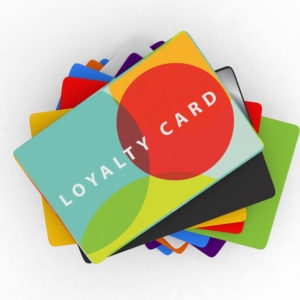— September 9, 2019
Today’s post in an excerpt from my first book, Customer Understanding: Three Ways to Put the “Customer” in Customer Experience (and at the Heart of Your Business). The book is available on Amazon as of this morning!
Transforming the customer experience (and your culture) is hard work. There are a lot of words and phrases and concepts (oh my!) that need to be understood and used as you dive in. This post (and book excerpt) provides some definitions that should bring about some clarity.
Journey Mapping—Current State
Journey mapping is a creative process in which you illustrate—with customers—the steps they take for some interaction they had with your company, some journey they were taking to complete a task and to achieve a desired outcome. It’s a timeline of what customers are doing, thinking, and feeling throughout the experience. The map tells the story of the customer’s journey as she interacts with your brand, all the while building empathy for her. Once companies understand how they make the customer feel, they can identify gaps in the journey and areas for improvement, fix the pain points, and ensure they keep delivering on the delighters.
Journey Mapping—Future State
In future-state journey mapping, you ideate—with customers—the ideal future experience and map out that experience, which then becomes the blueprint for implementation. The future-state map shows what the customer will be doing, thinking, and feeling (in the future ideal experience) throughout the respective interactions with the brand.
Assumptive Mapping
You are assumptive mapping when you gather a group of stakeholders in a room and map the customer journey based on what you think the experience is—based on feedback, your own experience, etc. You are assuming you know what the experience is. Starting with an assumptive map is not wrong, but if you do so, you must validate with customers, which many companies don’t do. Unfortunately, most assumptive mapping is actually process mapping in disguise!
Lifecycle Mapping
Lifecycle mapping is the process of creating a map that shows all of the phases of the customer’s relationship with your company. It’s high level and is important for understanding the customer’s overall relationship with the organization, from before he’s a customer through when he terminates the relationship. It typically includes these stages: Need, Awareness, Consideration, Selection/Purchase, Experience, Loyalty, Advocacy, Engagement, Raving Fans, and Exit. It’s not linear and often circles back on itself.
Touchpoint Mapping
In touchpoint mapping, you create a master map that outlines all of the stages of the experience or of the lifecycle with the brand, and then capture every touchpoint and interaction the customer has within each stage. You interview customers and stakeholders to identify all of the points of contact that the customer has with the brand within each stage. Touchpoint maps are also great vehicles to capture and inventory your current listening posts, identify painful touchpoints based on customer feedback, identify friction and leakage points, and identify listening gaps at a high level. Based on this information, the next step is to map the journey to and through the painful or problematic touchpoints.
Touchpoint
Touchpoints are any method or way that a customer comes into contact with or interacts with a brand, or vice versa, that might impact the way the customer feels about the brand. Some touchpoints, such as online reviews that are not initiated by the brand, may be outside of the brand’s control.
Moments of Truth
Moments of truth are those make-or-break moments in the experience the customer expects you to execute flawlessly; if you don’t, she may not continue with the transaction or interaction—or with the relationship. But when executed flawlessly, the moment delights the customer, assuring her that it’s the right decision to continue with the transaction and with the relationship. They are moments that cause customers to form impressions of your brand and, as a result, become a decision point for them.
Interactions
Sometimes person to person, sometimes person to system—it’s how the customer engages with the brand and vice versa. Channels are where the interactions take place. Interactions are what happen at the touchpoint.
Service Blueprint
This is a new concept for many folks, but it’s not a new concept at all. If you’re journey mapping (correctly) but haven’t created a service blueprint, you’re using journey mapping the tool, not journey mapping the process. And you’re probably not making/seeing any improvements in the experience.
While the journey map provides an end-to-end view of the customer experience, the service blueprint provides a customer-to-core view. It is a behind-the-scenes look at the people, tools, systems, policies, and processes that support and facilitate the experience you’ve mapped. It also includes people, tools, and systems that your customers have interacted with during their experience.
Process Mapping
During process mapping, you document the internal workflow that supports the experience that the customer is having. Process mapping is important and needs to be done, but it is all about what’s happening internally. It has nothing to do with the customer’s perspective, although your internal processes certainly can, and will, impact the customer experience.
Value-Stream Mapping
According to Wikipedia:
“Value-stream mapping is a lean-management method for analyzing the current state and designing a future state for the series of events that take a product or service from its beginning through to the customer with reduced lean wastes as compared to current map. A value stream focuses on areas of a firm that add value to a product or service, whereas a value chain refers to all of the activities within a company. The purpose of value-stream mapping is to identify and remove or reduce “waste” in value streams, thereby increasing the efficiency of a given value stream. Waste removal is intended to increase productivity by creating leaner operations, which in turn make waste and quality problems easier to identify.”
Value-stream mapping should ultimately be a part of your journey mapping process, working hand in hand with service blueprinting.
***
It’s important to understand the definitions and the differences between these map types. Use each one properly and at the appropriate time.
Define yourself or others will define you! -Mehmet Murat ildan
Business & Finance Articles on Business 2 Community
(61)
Report Post




